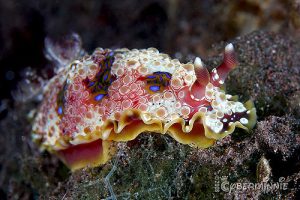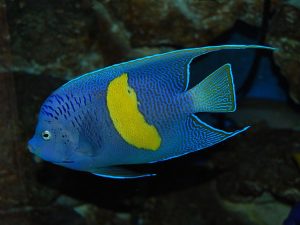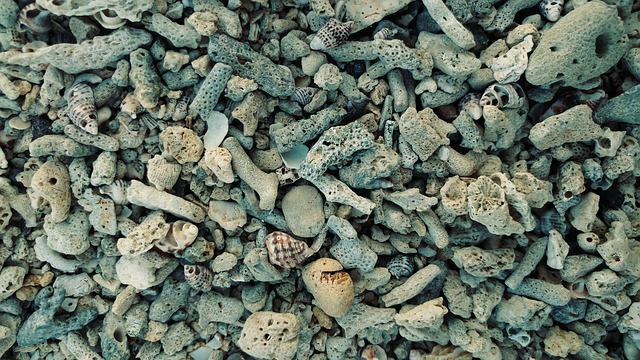Mark Martin on Dealing with Zoanthid-Eating Nudibranchs
 This week’s “Tip of the Week” comes from a question I received from a customer with a Zoanthid-eating Nudibranch problem.
This week’s “Tip of the Week” comes from a question I received from a customer with a Zoanthid-eating Nudibranch problem.
Zoanthid-eating Nudibranchs are what are known as aeolid Nudibranchs, a type of Nudibranch named for the Greek god of the wind, Aeolis. All aeolids eat cnidarians and are frequently named by aquarists based on their preferred prey (e.g. Zoanthid-eating Nudibranchs). Because they feed on ornamental cnidarians, we are generally intent on keeping them out of our aquaria, and that’s what I want to discuss here.
At Blue Zoo, we dip all incoming zoanthids (we dip all corals actually) in a malachite green solution with the primary goal of eliminating as many unwanted pests as possible. The dip works well with all of the soft bodied animals like aeolid Nudibranchs and bristle worms. It will kill some pest starfish as well as some pest snails but it really does a number on their eggs which is really the point of the dip. So the first tip I can offer to you is to ask the retailer if they prophylactically dip their zoanthids. If they don’t, you may want to consider dipping yourself as part of the acclimatization procedure.
I like to recommend a ten minute dip in RO/DI freshwater with Lugol’s Solution. Lugol’s Solution provides a strong source of free iodine and iodide and is frequently used as a dip for stony and soft or leather corals. Keep in mind that Lugol’s Solution is a very concentrated source of iodine—use 40 drops per gallon of water in a separate bucket for your dip. After the dip, quarantine the Zoanthid colony for at least one week. Because the dip will not kill the eggs, it is best to dip the colony every four days or so during quarantine.
Luckily, many individual aeolids are often ineffective at establishing breeding populations that can lead to infestation, so if you do observe a Zoanthid-eating Nudibranch on your Zoanthid colony, simply removing it with a pair of tweezers can be effective. Unfortunately, many Zoanthid-eating Nudibranchs are quite small and can easily proliferate in the aquarium environment making eradication quite difficult.
In these situations, I often recommend a biological approach. In other words, I suggest that aquarists introduce animals that, while consistent with their overall stocking plan, will target and (hopefully) eradicate pests. Using Peppermint Shrimp (Lysmata wurdemanni) to eradicate Aiptasia is a good example of a biological approach to pest control. When it comes to Zoanthid-eating Nudibranchs, There are several fishes that will target them. They include wrasses from the genus Halichoeres (e.g. the Yellow Coris Wrasse, H. chrysus) and Butterfly fishes from the genus Chaetodon (e.g. the Klein’s Butterfly fish, Chaetodon kleinii), but unfortunately, neither can be fully endorsed as reef compatible.
An effective treatment can be to use a product such as Salifert Flatworm Exit. This product is quite safe to both fishes and invertebrates and can be used in a reef tank. To use Flatworm Exit, turn off your UV sterilizer and ozone, and remove activated carbon from the system (keep your protein skimmer turned on). Add one drop of Flatworm Exit for every gallon of system water it in a high flow area of the tank (a cap full is good for 90 gallons). Flatworm Exit will NOT kill Zoanthid-eating Nudibranch eggs, so you should repeat the treatment again in one week to kill all of the newly hatched adults.
See also this URL – http://www.coralrx.com/index.php?option=com_content&view=article&id=11&Itemid=23

 The Blue Angelfish is a very beautiful fish found in the Gulf of Mexico, Florida, Bermuda and the Bahamas. The juvenile Blue Angelfish is quite different from that of the adult. Juveniles are dark blue with a yellow tail, a yellow area around the pectoral fins, and brilliant blue vertical bars on the body.
The Blue Angelfish is a very beautiful fish found in the Gulf of Mexico, Florida, Bermuda and the Bahamas. The juvenile Blue Angelfish is quite different from that of the adult. Juveniles are dark blue with a yellow tail, a yellow area around the pectoral fins, and brilliant blue vertical bars on the body.
